History of Romania
English
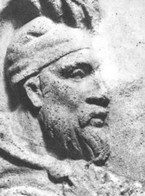 Romania's borders today include a large part of the territory of ancient Dacia. The present territory of Romania has been inhabited since 2 next millennium of Christ, the Indo-European tribes of the Thracians. From 6 century before Christ, in the Lower Danube region are getae signal, and Banat and Transylvania lands, Dacia. In his time Burebista (82-44 BC), the Geto-Dacian was abroad: in the north - Carpathians Forests in the south - the mountains Haemus (Balkans) in the west - the confluence with the Danube River Morava middle, in the east Bug River.
Romania's borders today include a large part of the territory of ancient Dacia. The present territory of Romania has been inhabited since 2 next millennium of Christ, the Indo-European tribes of the Thracians. From 6 century before Christ, in the Lower Danube region are getae signal, and Banat and Transylvania lands, Dacia. In his time Burebista (82-44 BC), the Geto-Dacian was abroad: in the north - Carpathians Forests in the south - the mountains Haemus (Balkans) in the west - the confluence with the Danube River Morava middle, in the east Bug River. After his death Burebista, the Geto-Dacian will share then four in five political formations. The core of the state remains in the area Sureanu mountains, where the royal succession Deceneu Comosicus and Coryllus. If the unit is rebuilt by King Decebal (87-106 BC). The new state was at the residence Sarmizegetusa. This was smaller than the State of Burebista, but was better organized. He represents the zenith of civilization Geto-Dacian, in the second stage of the Iron Age (La Tene). Due to worsening danger novel, which reached the Lower Danube, Decebal gate two wars with the Romans ruled by Emperor Traian in years: 101-102, respectively 105-106. Following these wars, Dacia is conquered and transformed the Roman province. Officially begin the process of Romanization of the local Geto-Dacian.
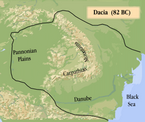 Romanization is a complex historical process by which penetrates Roman civilization in all compartments of life of a province that leads to the substitution language population subject to Latin. Romanization factors were administrative, military, veterans, settlers, urbanization, religion, law and education in Latin. The impact on local, of these factors has been assimilation, in consciously, the Roman civilization. In the year 271, Emperor Aurelianus administration and withdraw the army from Dacia. Most of the population remains Romanized north of the Danube. We have evidence of continuity Dacian-Roman population north of the Danube. Daco-Roman settlement north-Danubian know a housing uninterrupted. Old urban centers are Sucidava, Dierna, Sarmizegetusa, Napoca, Porolissum. But some residents of old cities to withdraw because of the rural lands migrators and founded settlements in November. After the withdrawal of Aurelian unit is restored Dunabe Dacian left at the bottom. Abolish frontier novels on line Carpathian allowed free circulation in both versions: Dacia free - engage in the Carpathian mountains; Daco-Romanian pass to E. S. and the Carpathians. Dacian rehabilitation unit boosted the process of Romanization. Uninterrupted practice of a specific life incompatible with nomadism: agriculture, crafts, minerals exploitation and trade.
Romanization is a complex historical process by which penetrates Roman civilization in all compartments of life of a province that leads to the substitution language population subject to Latin. Romanization factors were administrative, military, veterans, settlers, urbanization, religion, law and education in Latin. The impact on local, of these factors has been assimilation, in consciously, the Roman civilization. In the year 271, Emperor Aurelianus administration and withdraw the army from Dacia. Most of the population remains Romanized north of the Danube. We have evidence of continuity Dacian-Roman population north of the Danube. Daco-Roman settlement north-Danubian know a housing uninterrupted. Old urban centers are Sucidava, Dierna, Sarmizegetusa, Napoca, Porolissum. But some residents of old cities to withdraw because of the rural lands migrators and founded settlements in November. After the withdrawal of Aurelian unit is restored Dunabe Dacian left at the bottom. Abolish frontier novels on line Carpathian allowed free circulation in both versions: Dacia free - engage in the Carpathian mountains; Daco-Romanian pass to E. S. and the Carpathians. Dacian rehabilitation unit boosted the process of Romanization. Uninterrupted practice of a specific life incompatible with nomadism: agriculture, crafts, minerals exploitation and trade.
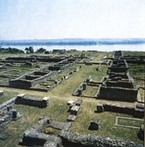 Nicolae Iorga, based on historical springs studied a life, concludes in Romanian history, published posthumously in part, the Romanian people was formed between the Carpathians beskizi and Pelopones and from the Adriatic to the Black Sea. " This finding is made by PP Panaitescu, Silviu Dragomir and others, to make ethnographic Romanians are descendants Thracian-Illyrs Romanized. Father Dumitru Staniloae notice that Jewish - the subject of extensive debate - was achieved primarily through Christianization Thracian-Illyrs, process and determine Jewish and pave the way for a real latinization and those close to Christian communities. Therefore, the Romanians have been formed on a vast territory that extends north and south of the Danube, encompassing the former Roman province of Dacia and Moesia. The first summer was that of the Gauls and Romans and be the basis for training the Romanian people. After the withdrawal of Aurelian in the former Dacia province remains a Romanized population, latinofona. A second synthesis occurs in the north and south of the Danube during several centuries of population Dacian-Roman slave populations in the coming century. VII. The consequences of Slav settlement south of the Danube are important. Is the separation of latins Pen. Balkan north of the Danube. South of the Danube - the majority of the population is Roman assimilated by the Slavs. North of the Danube, people Romania assimilated the numerous slave. The result of the two syntheses led to the formation of the Romanian people, process ended broadly at the end of the century VIII. Also at the end of the century VIII can speak Romanian emergence as a Romance or neo-Latin.
Nicolae Iorga, based on historical springs studied a life, concludes in Romanian history, published posthumously in part, the Romanian people was formed between the Carpathians beskizi and Pelopones and from the Adriatic to the Black Sea. " This finding is made by PP Panaitescu, Silviu Dragomir and others, to make ethnographic Romanians are descendants Thracian-Illyrs Romanized. Father Dumitru Staniloae notice that Jewish - the subject of extensive debate - was achieved primarily through Christianization Thracian-Illyrs, process and determine Jewish and pave the way for a real latinization and those close to Christian communities. Therefore, the Romanians have been formed on a vast territory that extends north and south of the Danube, encompassing the former Roman province of Dacia and Moesia. The first summer was that of the Gauls and Romans and be the basis for training the Romanian people. After the withdrawal of Aurelian in the former Dacia province remains a Romanized population, latinofona. A second synthesis occurs in the north and south of the Danube during several centuries of population Dacian-Roman slave populations in the coming century. VII. The consequences of Slav settlement south of the Danube are important. Is the separation of latins Pen. Balkan north of the Danube. South of the Danube - the majority of the population is Roman assimilated by the Slavs. North of the Danube, people Romania assimilated the numerous slave. The result of the two syntheses led to the formation of the Romanian people, process ended broadly at the end of the century VIII. Also at the end of the century VIII can speak Romanian emergence as a Romance or neo-Latin.
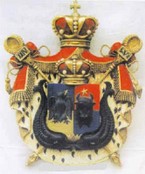 In that period the name Dacia continued to use two Roman provinces south Danube (Serbia and Bulgaria today), but also for the territory north of the Danube. At the same time, the region between the Adriatic Sea, Black Sea, Marmara Sea and the Aegean is term "Romania", which comes from the name and the current war. Invasion of the glory of the century VII will have adverse effects for the Romanian. First, will allow the Greeks to include territories over the Danube in the Romanesque Byzantine Empire (the term for Romania attest that the Eastern Roman Empire, the capital of Constantinople, is Roman Empire destroyed by barbarians). Slavs and Bulgarians will separate so the Romanians to Haemus south of the (Balkan Mountains), those in the north. The separation will meet a series of interruptions and movements of "unification" as Asanestilor* (sec. XII-XIII), which together with the Bulgarians become a vehicle for expanding slavo-Bulgarian, Orthodox, the vector north and north-west finally destroyed the great invasion of Tartars, the appearance of the Ungrovlahia (or Wallachia), finalizing the organization of Transylvania and Ottoman occupation.
In that period the name Dacia continued to use two Roman provinces south Danube (Serbia and Bulgaria today), but also for the territory north of the Danube. At the same time, the region between the Adriatic Sea, Black Sea, Marmara Sea and the Aegean is term "Romania", which comes from the name and the current war. Invasion of the glory of the century VII will have adverse effects for the Romanian. First, will allow the Greeks to include territories over the Danube in the Romanesque Byzantine Empire (the term for Romania attest that the Eastern Roman Empire, the capital of Constantinople, is Roman Empire destroyed by barbarians). Slavs and Bulgarians will separate so the Romanians to Haemus south of the (Balkan Mountains), those in the north. The separation will meet a series of interruptions and movements of "unification" as Asanestilor* (sec. XII-XIII), which together with the Bulgarians become a vehicle for expanding slavo-Bulgarian, Orthodox, the vector north and north-west finally destroyed the great invasion of Tartars, the appearance of the Ungrovlahia (or Wallachia), finalizing the organization of Transylvania and Ottoman occupation.
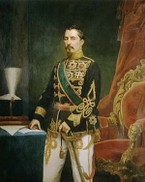 Romanian modern state was created through the union of the principalities Moldavia and Wallachia (or Romanian Country ) in the year 1859, with the simultaneous election for both state ruler's Alexandru Ioan Cuza. He was forced to abdicate in 1866 by a broad coalition of parties that time, and called monstrous Coalition because of the political guidelines of various of its members, who reacted against such manifestations of authoritarian prince. The union had not been guaranteed only during the reign of Cuza, when being passed by the introduction of a case domnitoare foreign branch of the Hohenzollern Catholic: in 1881, kings. Romania became independent after participating in Russo-Turkish war of 1877 - 1878, with Serbia. The country will open its territory as a result of the Second Balkan War, when the Peace of Bucharest (1913) it gets the province of Cadrilater and First World War, when Transylvania, Bukovina and Bessarabia are obtained, for the most part, by applying the policy "self nations" (wilsoniene principles, with local initiative and plebiscite), but having the occasional appearance of military campaigns (1918-1919). Bessarabia, northern Bukovina and Herta have been incorporated into the Soviet Union in 1940, recovered in 1941 and then again incorporated into the Soviet Union in 1944 and today is in the Republic of Moldova and Ukraine. In 1940, Cadrilaterul was returned to Bulgaria.
Romanian modern state was created through the union of the principalities Moldavia and Wallachia (or Romanian Country ) in the year 1859, with the simultaneous election for both state ruler's Alexandru Ioan Cuza. He was forced to abdicate in 1866 by a broad coalition of parties that time, and called monstrous Coalition because of the political guidelines of various of its members, who reacted against such manifestations of authoritarian prince. The union had not been guaranteed only during the reign of Cuza, when being passed by the introduction of a case domnitoare foreign branch of the Hohenzollern Catholic: in 1881, kings. Romania became independent after participating in Russo-Turkish war of 1877 - 1878, with Serbia. The country will open its territory as a result of the Second Balkan War, when the Peace of Bucharest (1913) it gets the province of Cadrilater and First World War, when Transylvania, Bukovina and Bessarabia are obtained, for the most part, by applying the policy "self nations" (wilsoniene principles, with local initiative and plebiscite), but having the occasional appearance of military campaigns (1918-1919). Bessarabia, northern Bukovina and Herta have been incorporated into the Soviet Union in 1940, recovered in 1941 and then again incorporated into the Soviet Union in 1944 and today is in the Republic of Moldova and Ukraine. In 1940, Cadrilaterul was returned to Bulgaria.
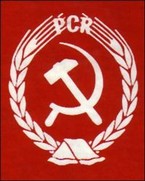 After the Second World War, Romania will become a communist country under the influence of the Soviet Union - counter, after approx. 1965, a variant the communist regime, occasionally, in matters of foreign policy in opposition to the USSR. The regime has stayed away from any attempt to reform international, turning to authoritarian approach, with events repressive, as was faced with the policies of Perestroika. In December 1989, at the end of a series of bloody events, building political communist collapsed. Name the country was the People's Republic of Romania (to and from them, from 1953 until 1964,'s abbreviated RPR, 1947-1965) and the Socialist Republic of Romania ('s (more rarely) abbreviated RSR, 1965-1989). Actual name, Romania, dates from 1862. Communist regime in Romania, leading to altered political, economic, social and moral, of education, science, culture. Dictatorial regime is removed from revoltei popular in December 1989. Council of National Salvation Front, which took power in December 1989, proclaimed renounce communism, the country's name change (in Romania), the transition to a market economy, restoration of fundamental human rights.
After the Second World War, Romania will become a communist country under the influence of the Soviet Union - counter, after approx. 1965, a variant the communist regime, occasionally, in matters of foreign policy in opposition to the USSR. The regime has stayed away from any attempt to reform international, turning to authoritarian approach, with events repressive, as was faced with the policies of Perestroika. In December 1989, at the end of a series of bloody events, building political communist collapsed. Name the country was the People's Republic of Romania (to and from them, from 1953 until 1964,'s abbreviated RPR, 1947-1965) and the Socialist Republic of Romania ('s (more rarely) abbreviated RSR, 1965-1989). Actual name, Romania, dates from 1862. Communist regime in Romania, leading to altered political, economic, social and moral, of education, science, culture. Dictatorial regime is removed from revoltei popular in December 1989. Council of National Salvation Front, which took power in December 1989, proclaimed renounce communism, the country's name change (in Romania), the transition to a market economy, restoration of fundamental human rights.
 After the Cold War in 1989, Romania has improved relations with Europe, joined NATO in 2004 and joined the European Union. The parliamentary elections of 2004 were won by the Coalition PSD + PUR. But PUR left alliance and changes in the name Conservative Party. Presidential elections are won by the candidate of the Justice and Truth Alliance: Traian Basescu. Calin Popescu Tariceanu formed a coalition government composed of: Justice and Truth Alliance + Democratic Union of Hungarians in Romania + Conservative Party. Accession Treaty of Bulgaria and Romania to the European Union was signed by representatives of Member States and those countries acceding in Luxembourg, Neumünster Abbey, on 25 April 2005 and came into force on 1 January 2007, after its ratification by the 25 Member of the European Union. Romania is a parliamentary republic. Also in 2007 President Traian Basescu is suspended, but is elected by the people. A few weeks later the Justice and Truth Alliance fray.
After the Cold War in 1989, Romania has improved relations with Europe, joined NATO in 2004 and joined the European Union. The parliamentary elections of 2004 were won by the Coalition PSD + PUR. But PUR left alliance and changes in the name Conservative Party. Presidential elections are won by the candidate of the Justice and Truth Alliance: Traian Basescu. Calin Popescu Tariceanu formed a coalition government composed of: Justice and Truth Alliance + Democratic Union of Hungarians in Romania + Conservative Party. Accession Treaty of Bulgaria and Romania to the European Union was signed by representatives of Member States and those countries acceding in Luxembourg, Neumünster Abbey, on 25 April 2005 and came into force on 1 January 2007, after its ratification by the 25 Member of the European Union. Romania is a parliamentary republic. Also in 2007 President Traian Basescu is suspended, but is elected by the people. A few weeks later the Justice and Truth Alliance fray.
 Romanization is a complex historical process by which penetrates Roman civilization in all compartments of life of a province that leads to the substitution language population subject to Latin. Romanization factors were administrative, military, veterans, settlers, urbanization, religion, law and education in Latin. The impact on local, of these factors has been assimilation, in consciously, the Roman civilization. In the year 271, Emperor Aurelianus administration and withdraw the army from Dacia. Most of the population remains Romanized north of the Danube. We have evidence of continuity Dacian-Roman population north of the Danube. Daco-Roman settlement north-Danubian know a housing uninterrupted. Old urban centers are Sucidava, Dierna, Sarmizegetusa, Napoca, Porolissum. But some residents of old cities to withdraw because of the rural lands migrators and founded settlements in November. After the withdrawal of Aurelian unit is restored Dunabe Dacian left at the bottom. Abolish frontier novels on line Carpathian allowed free circulation in both versions: Dacia free - engage in the Carpathian mountains; Daco-Romanian pass to E. S. and the Carpathians. Dacian rehabilitation unit boosted the process of Romanization. Uninterrupted practice of a specific life incompatible with nomadism: agriculture, crafts, minerals exploitation and trade.
Romanization is a complex historical process by which penetrates Roman civilization in all compartments of life of a province that leads to the substitution language population subject to Latin. Romanization factors were administrative, military, veterans, settlers, urbanization, religion, law and education in Latin. The impact on local, of these factors has been assimilation, in consciously, the Roman civilization. In the year 271, Emperor Aurelianus administration and withdraw the army from Dacia. Most of the population remains Romanized north of the Danube. We have evidence of continuity Dacian-Roman population north of the Danube. Daco-Roman settlement north-Danubian know a housing uninterrupted. Old urban centers are Sucidava, Dierna, Sarmizegetusa, Napoca, Porolissum. But some residents of old cities to withdraw because of the rural lands migrators and founded settlements in November. After the withdrawal of Aurelian unit is restored Dunabe Dacian left at the bottom. Abolish frontier novels on line Carpathian allowed free circulation in both versions: Dacia free - engage in the Carpathian mountains; Daco-Romanian pass to E. S. and the Carpathians. Dacian rehabilitation unit boosted the process of Romanization. Uninterrupted practice of a specific life incompatible with nomadism: agriculture, crafts, minerals exploitation and trade.  Nicolae Iorga, based on historical springs studied a life, concludes in Romanian history, published posthumously in part, the Romanian people was formed between the Carpathians beskizi and Pelopones and from the Adriatic to the Black Sea. " This finding is made by PP Panaitescu, Silviu Dragomir and others, to make ethnographic Romanians are descendants Thracian-Illyrs Romanized. Father Dumitru Staniloae notice that Jewish - the subject of extensive debate - was achieved primarily through Christianization Thracian-Illyrs, process and determine Jewish and pave the way for a real latinization and those close to Christian communities. Therefore, the Romanians have been formed on a vast territory that extends north and south of the Danube, encompassing the former Roman province of Dacia and Moesia. The first summer was that of the Gauls and Romans and be the basis for training the Romanian people. After the withdrawal of Aurelian in the former Dacia province remains a Romanized population, latinofona. A second synthesis occurs in the north and south of the Danube during several centuries of population Dacian-Roman slave populations in the coming century. VII. The consequences of Slav settlement south of the Danube are important. Is the separation of latins Pen. Balkan north of the Danube. South of the Danube - the majority of the population is Roman assimilated by the Slavs. North of the Danube, people Romania assimilated the numerous slave. The result of the two syntheses led to the formation of the Romanian people, process ended broadly at the end of the century VIII. Also at the end of the century VIII can speak Romanian emergence as a Romance or neo-Latin.
Nicolae Iorga, based on historical springs studied a life, concludes in Romanian history, published posthumously in part, the Romanian people was formed between the Carpathians beskizi and Pelopones and from the Adriatic to the Black Sea. " This finding is made by PP Panaitescu, Silviu Dragomir and others, to make ethnographic Romanians are descendants Thracian-Illyrs Romanized. Father Dumitru Staniloae notice that Jewish - the subject of extensive debate - was achieved primarily through Christianization Thracian-Illyrs, process and determine Jewish and pave the way for a real latinization and those close to Christian communities. Therefore, the Romanians have been formed on a vast territory that extends north and south of the Danube, encompassing the former Roman province of Dacia and Moesia. The first summer was that of the Gauls and Romans and be the basis for training the Romanian people. After the withdrawal of Aurelian in the former Dacia province remains a Romanized population, latinofona. A second synthesis occurs in the north and south of the Danube during several centuries of population Dacian-Roman slave populations in the coming century. VII. The consequences of Slav settlement south of the Danube are important. Is the separation of latins Pen. Balkan north of the Danube. South of the Danube - the majority of the population is Roman assimilated by the Slavs. North of the Danube, people Romania assimilated the numerous slave. The result of the two syntheses led to the formation of the Romanian people, process ended broadly at the end of the century VIII. Also at the end of the century VIII can speak Romanian emergence as a Romance or neo-Latin.  In that period the name Dacia continued to use two Roman provinces south Danube (Serbia and Bulgaria today), but also for the territory north of the Danube. At the same time, the region between the Adriatic Sea, Black Sea, Marmara Sea and the Aegean is term "Romania", which comes from the name and the current war. Invasion of the glory of the century VII will have adverse effects for the Romanian. First, will allow the Greeks to include territories over the Danube in the Romanesque Byzantine Empire (the term for Romania attest that the Eastern Roman Empire, the capital of Constantinople, is Roman Empire destroyed by barbarians). Slavs and Bulgarians will separate so the Romanians to Haemus south of the (Balkan Mountains), those in the north. The separation will meet a series of interruptions and movements of "unification" as Asanestilor* (sec. XII-XIII), which together with the Bulgarians become a vehicle for expanding slavo-Bulgarian, Orthodox, the vector north and north-west finally destroyed the great invasion of Tartars, the appearance of the Ungrovlahia (or Wallachia), finalizing the organization of Transylvania and Ottoman occupation.
In that period the name Dacia continued to use two Roman provinces south Danube (Serbia and Bulgaria today), but also for the territory north of the Danube. At the same time, the region between the Adriatic Sea, Black Sea, Marmara Sea and the Aegean is term "Romania", which comes from the name and the current war. Invasion of the glory of the century VII will have adverse effects for the Romanian. First, will allow the Greeks to include territories over the Danube in the Romanesque Byzantine Empire (the term for Romania attest that the Eastern Roman Empire, the capital of Constantinople, is Roman Empire destroyed by barbarians). Slavs and Bulgarians will separate so the Romanians to Haemus south of the (Balkan Mountains), those in the north. The separation will meet a series of interruptions and movements of "unification" as Asanestilor* (sec. XII-XIII), which together with the Bulgarians become a vehicle for expanding slavo-Bulgarian, Orthodox, the vector north and north-west finally destroyed the great invasion of Tartars, the appearance of the Ungrovlahia (or Wallachia), finalizing the organization of Transylvania and Ottoman occupation.  Romanian modern state was created through the union of the principalities Moldavia and Wallachia (or Romanian Country ) in the year 1859, with the simultaneous election for both state ruler's Alexandru Ioan Cuza. He was forced to abdicate in 1866 by a broad coalition of parties that time, and called monstrous Coalition because of the political guidelines of various of its members, who reacted against such manifestations of authoritarian prince. The union had not been guaranteed only during the reign of Cuza, when being passed by the introduction of a case domnitoare foreign branch of the Hohenzollern Catholic: in 1881, kings. Romania became independent after participating in Russo-Turkish war of 1877 - 1878, with Serbia. The country will open its territory as a result of the Second Balkan War, when the Peace of Bucharest (1913) it gets the province of Cadrilater and First World War, when Transylvania, Bukovina and Bessarabia are obtained, for the most part, by applying the policy "self nations" (wilsoniene principles, with local initiative and plebiscite), but having the occasional appearance of military campaigns (1918-1919). Bessarabia, northern Bukovina and Herta have been incorporated into the Soviet Union in 1940, recovered in 1941 and then again incorporated into the Soviet Union in 1944 and today is in the Republic of Moldova and Ukraine. In 1940, Cadrilaterul was returned to Bulgaria.
Romanian modern state was created through the union of the principalities Moldavia and Wallachia (or Romanian Country ) in the year 1859, with the simultaneous election for both state ruler's Alexandru Ioan Cuza. He was forced to abdicate in 1866 by a broad coalition of parties that time, and called monstrous Coalition because of the political guidelines of various of its members, who reacted against such manifestations of authoritarian prince. The union had not been guaranteed only during the reign of Cuza, when being passed by the introduction of a case domnitoare foreign branch of the Hohenzollern Catholic: in 1881, kings. Romania became independent after participating in Russo-Turkish war of 1877 - 1878, with Serbia. The country will open its territory as a result of the Second Balkan War, when the Peace of Bucharest (1913) it gets the province of Cadrilater and First World War, when Transylvania, Bukovina and Bessarabia are obtained, for the most part, by applying the policy "self nations" (wilsoniene principles, with local initiative and plebiscite), but having the occasional appearance of military campaigns (1918-1919). Bessarabia, northern Bukovina and Herta have been incorporated into the Soviet Union in 1940, recovered in 1941 and then again incorporated into the Soviet Union in 1944 and today is in the Republic of Moldova and Ukraine. In 1940, Cadrilaterul was returned to Bulgaria.  After the Second World War, Romania will become a communist country under the influence of the Soviet Union - counter, after approx. 1965, a variant the communist regime, occasionally, in matters of foreign policy in opposition to the USSR. The regime has stayed away from any attempt to reform international, turning to authoritarian approach, with events repressive, as was faced with the policies of Perestroika. In December 1989, at the end of a series of bloody events, building political communist collapsed. Name the country was the People's Republic of Romania (to and from them, from 1953 until 1964,'s abbreviated RPR, 1947-1965) and the Socialist Republic of Romania ('s (more rarely) abbreviated RSR, 1965-1989). Actual name, Romania, dates from 1862. Communist regime in Romania, leading to altered political, economic, social and moral, of education, science, culture. Dictatorial regime is removed from revoltei popular in December 1989. Council of National Salvation Front, which took power in December 1989, proclaimed renounce communism, the country's name change (in Romania), the transition to a market economy, restoration of fundamental human rights.
After the Second World War, Romania will become a communist country under the influence of the Soviet Union - counter, after approx. 1965, a variant the communist regime, occasionally, in matters of foreign policy in opposition to the USSR. The regime has stayed away from any attempt to reform international, turning to authoritarian approach, with events repressive, as was faced with the policies of Perestroika. In December 1989, at the end of a series of bloody events, building political communist collapsed. Name the country was the People's Republic of Romania (to and from them, from 1953 until 1964,'s abbreviated RPR, 1947-1965) and the Socialist Republic of Romania ('s (more rarely) abbreviated RSR, 1965-1989). Actual name, Romania, dates from 1862. Communist regime in Romania, leading to altered political, economic, social and moral, of education, science, culture. Dictatorial regime is removed from revoltei popular in December 1989. Council of National Salvation Front, which took power in December 1989, proclaimed renounce communism, the country's name change (in Romania), the transition to a market economy, restoration of fundamental human rights.  After the Cold War in 1989, Romania has improved relations with Europe, joined NATO in 2004 and joined the European Union. The parliamentary elections of 2004 were won by the Coalition PSD + PUR. But PUR left alliance and changes in the name Conservative Party. Presidential elections are won by the candidate of the Justice and Truth Alliance: Traian Basescu. Calin Popescu Tariceanu formed a coalition government composed of: Justice and Truth Alliance + Democratic Union of Hungarians in Romania + Conservative Party. Accession Treaty of Bulgaria and Romania to the European Union was signed by representatives of Member States and those countries acceding in Luxembourg, Neumünster Abbey, on 25 April 2005 and came into force on 1 January 2007, after its ratification by the 25 Member of the European Union. Romania is a parliamentary republic. Also in 2007 President Traian Basescu is suspended, but is elected by the people. A few weeks later the Justice and Truth Alliance fray.
After the Cold War in 1989, Romania has improved relations with Europe, joined NATO in 2004 and joined the European Union. The parliamentary elections of 2004 were won by the Coalition PSD + PUR. But PUR left alliance and changes in the name Conservative Party. Presidential elections are won by the candidate of the Justice and Truth Alliance: Traian Basescu. Calin Popescu Tariceanu formed a coalition government composed of: Justice and Truth Alliance + Democratic Union of Hungarians in Romania + Conservative Party. Accession Treaty of Bulgaria and Romania to the European Union was signed by representatives of Member States and those countries acceding in Luxembourg, Neumünster Abbey, on 25 April 2005 and came into force on 1 January 2007, after its ratification by the 25 Member of the European Union. Romania is a parliamentary republic. Also in 2007 President Traian Basescu is suspended, but is elected by the people. A few weeks later the Justice and Truth Alliance fray.


